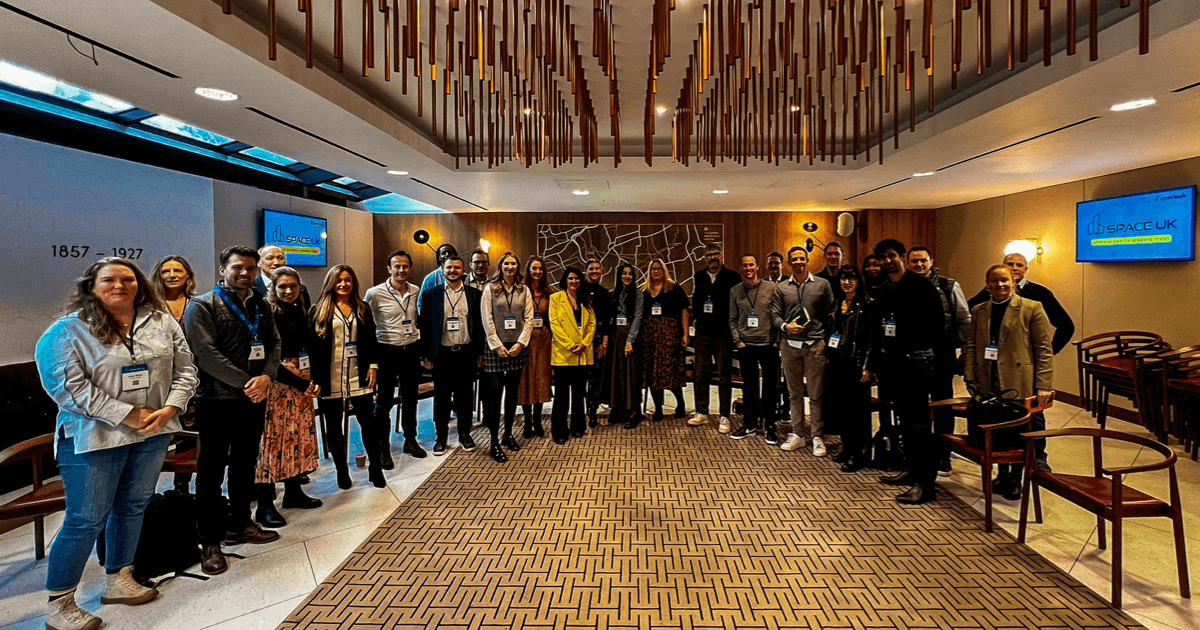
Last week we hosted a Tribe (round table) at SpaceUK on Flexspace loyalty and revenue. It was a discussion about how we measure and manage client loyalty in flex on a very practical level; how the nature of engagement is developing in a more subtle way and how we balance revenue growth strategy alongside providing the services and amenity that make flexspace a place that clients want to stay.
We were joined by industry colleagues representing a mix of incredible flexspace brands; Elliot Gold from Work.Life, Gaby Hersham from Huckletree, Natasha Guerra from Runway East, Laura Walker from Orega and Heather Gray from Clockwise. They shared their thoughts in what was an open and honest conversation, comparing the approaches of their respective companies.
How do we define and create client loyalty in flex?
Average tenancy length has long been the simple measure of client loyalty but targeting longer contract lengths to deliver this can be a false goal, Heather felt. Rolling monthly contracts supported by building a close and supportive relationship with your clients is ultimately more likely to lead to longer average tenancy.
Laura made the point that Flex is by its nature a short tenure offering, so using average tenancy as a measure doesn’t necessarily make sense and had dropped their 12 month minimum contract term as a result. Longer contract length has though become relevant in terms of identifying the shift in client base post pandemic, Gaby felt, with more corporates who were previously used to ten year leases. Customer Lifetime Value was the better metric Elliot suggested, to drive a holistic approach to client engagement.
Engagement beyond beer and pizza
Gaby is firmly committed to using NPS to structure her brand’s approach to engagement, basing it on honest feedback. She believes that a tailored approach and a strong roll out for the survey is key to getting a good response rate. Natasha agreed but cautioned overuse of NPS to avoid client burnout.
It was generally agreed that engagement was very location-specific. The size and number of tenants dictates event planning to a large degree. Everyone had considered the balance between creating a standard and structure for engagements whilst still empowering building teams to make it work for their specific building and location.
Ancillary services – revenue driver or engagement tool?
Elliot believes that focusing on ancillary services as a revenue generator could be a distraction from the core business revenue of memberships or offices. Better to include services and protect the main revenue stream.
Laura shared that it was important to be strategic and review the portfolio over time to assess when additional ancillary services become utilities, such as voice, and where to invest for return, e.g. meeting rooms.
There was also a shared conclusion that if you ask clients if they want an additional resource or amenity they will say yes – Peloton bikes being an example – even where they have no desire to use them. So, you need to be very confident in your use case before roll out.
Is workspace technology a cost or revenue?
This subject triggered the most varied views in the room. Heather had seen the right technology double telecoms income; but for Elliot, technology is part of the core workspace package that makes his offering attractive. The future is about retrieving data from that to personalize services.
For Laura it was all about high quality performance as “Getting IT wrong loses customers.” Jon Seal, technologywithin MD, agreed and shared that getting the tech right isn’t simple, with constant vigilance needed to ensure security, changes in device connectivity etc. It needs to be a priority for every space. Alongside an IT strategy to integrate services to create something which is easy to use for location teams and delivers a great client experience.
Developing team members to embody the brand
Natasha shared that her client and team approach was both aligned and transparent; a “You said, we did” approach. With location management being such a flat structure, providing limited opportunity to progress Gaby accepts that team members will naturally churn, so she felt it important that they have a positive work experience whilst they are there. However, she acknowledged there had been challenges managing a largely Gen Z front desk work force and had needed to set clear expectations on performance and reward.
For the national brands, managing and developing teams had other challenges. Heather and Laura shared how having small outlier centres with small teams made them feel isolated and it was harder to share learning across the team. However, buddy schemes, work shadowing, regular online and face to face gatherings were all useful tools to combat this.
Huge thanks to our fellow flexspace Tribe cohosts and for all those to joined us and contributed to the discussion. To find out more about how technologywithin can support client loyalty in your workspace get in touch with our sales team for a chat.
Recent articles

The Changing Face of Germany’s Flex Office Market: Demand, Deals, and… Robot Chefs?

Experimenting with Flex: The Rise of Coworking Labs
